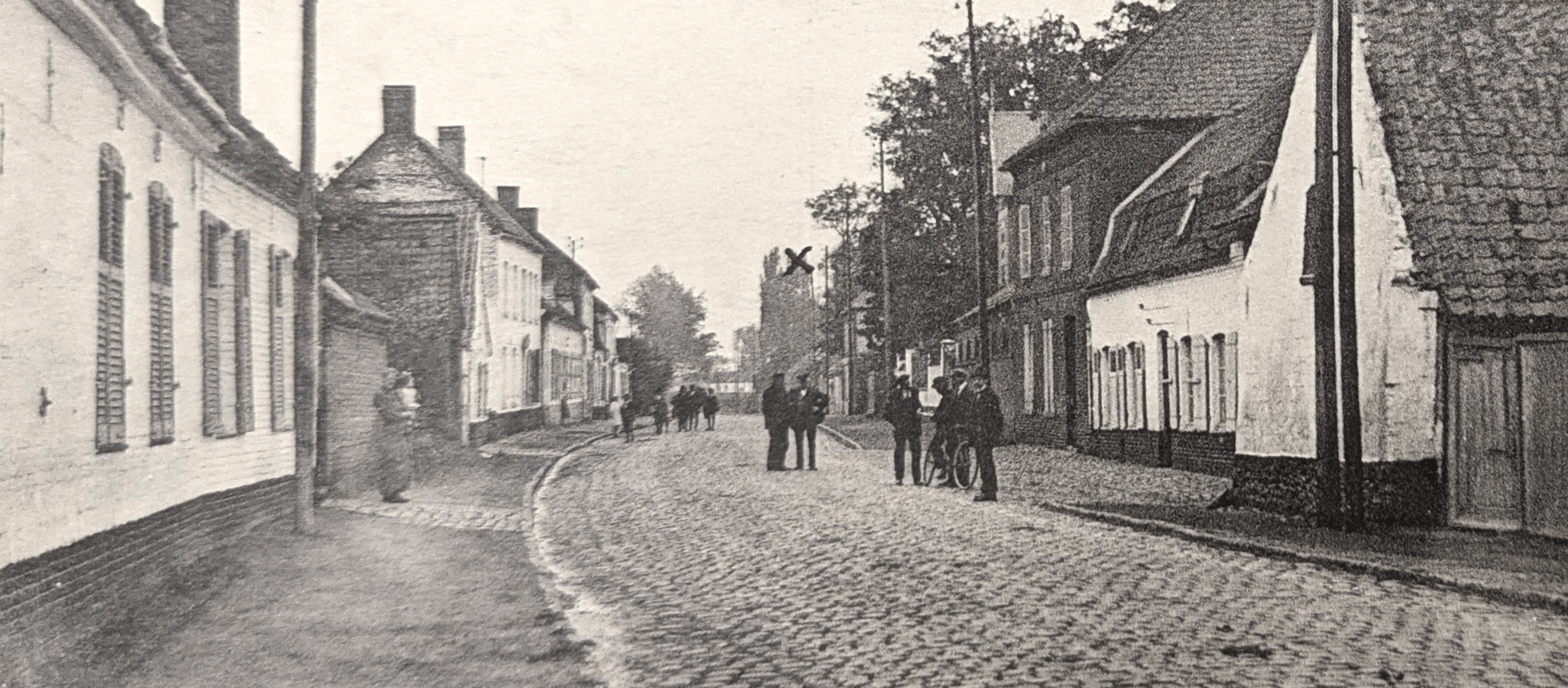
Reprise in France
New Year 1918
Aftermath
Passchendaele had been devastating for the battalion. Not only did so many of the battalion become casualties, but the survivors were worn through and tired. Reprise was needed by them, and reinforcements for the battalion as a whole. The 49th Battalion (E.R.) with the Canadian Corps was ordered South.
Rest and Rebuilding
Reaching Saint-Hilaire, the men rested and tried to regain their spirit. The civilians made the Fortyniners as welcome as possible and reinforcement drafts soon arrived yet morale was heavy. The weather was cold and the march down had been a trying endeavour. There was little to do in Saint-Hilaire. Just rest and wait.
Return to Lens - Christmas 1917
In late December 1917, the 49th Battalion (E.R.) returned to duty. Much like the Christmas before, they were low on strength and although no major battles were fought, they were still to hold their own. Casualties arrived periodically yet suddenly. The line itself was confusing. Isolated posts and gaps meant most movement had to be done at night and under darkness. As such, there were many close calls of friendly fire. In one tragic case in January 1918, Captain Jim Mead MC of "A" Company was killed by a 49th Battalion (E.R.) sentry when returning from a solo night patrol in No Mans Land.
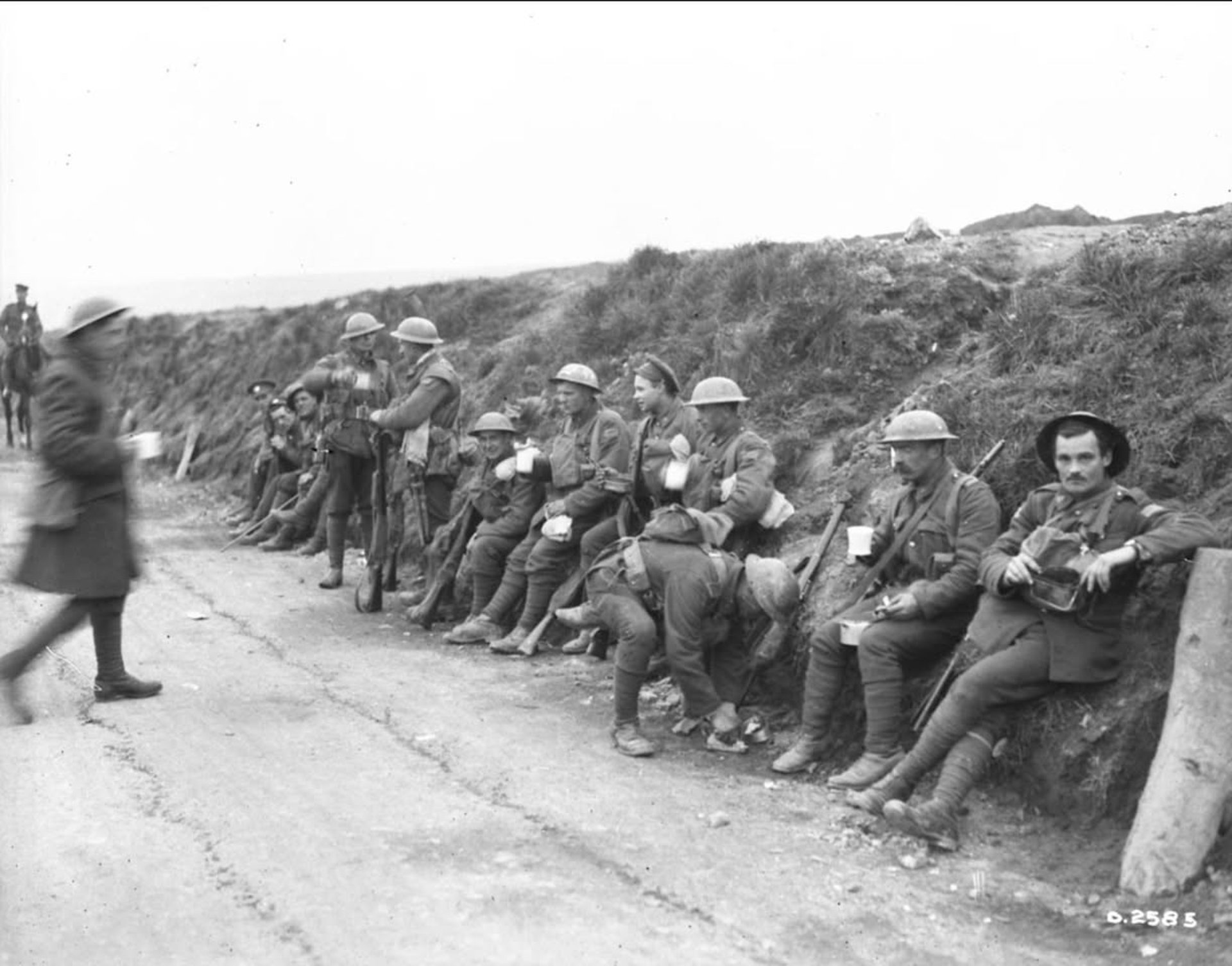
Spring Offensives
Spring 1918
A German Offensive
It had long been anticipated by the allied armies on the Western Front of a German offensive in the spring of 1918. Just when and where was the question. In late March 1918, word reached the men that the German offensive had begun to their South. The Canadian Corps would hold firm and await what their trial.
The Long Trip
The German attacks never directly struck against the 49th Battalion (E.R.)'s positions near Avion, France. Yet the battalion was continually asked to take on a wider frontage. Manpower was short and there was little time for rest or bathing. In all, the Forty-Ninth spent 58 consecutive days in the trenches.
To Dominate No Man's Land
So overstretched and understrength was the Canadian line that a special order arrived: to control No Mans Land. The formely disputed and isolated ground would soon become their home. Countless patrols and raids were conducted. The men spent dozens of nights in listening posts or up against the German wire gathering intelligence. The old notion of a good offence was a good defence and the Fortyniners instilled pressure and courage on their counterparts across No Mans Land. Eventually, the order to move to army reserve arrived.
Rest & Training
In May 1918, the order finally reached the battalion to withdraw to the small village of Fauquenhem - far in the rear of the allied lines. There they would not only rest, but also prepare for the upcoming allied counter offensive. Emphasis in training was given on open warfare and multi battalion and arm cooperation.
Mercatel
In July of 1918, the 49th Battalion (E.R.) was deployed to Mercatel. A new sector, it was a holding action which saw numerous patrols. Casualties were relatively light and the trip largely uneventful. What it did mark was the final trench rotation the battalion participated in before the Hundred Days Offensive.
The Hundred Days
The German Spring Offensives of 1918 had failed to end the war in Germany's favour. The desperate attempt had yielding much ground but had also left the German line overstretched and understrength. Hoping to exploit this in balance, the allies devised a counter offensive. Favouring rapid and successive battles over a slow and methodical approach, the offensive strived to wear the German army down into submission. The first place to strike would be on the Somme in August 1918.

Battle of Amiens
August 8th - 15th 1918
The Battle of Amiens
When the 49th Battalion (E.R.) boarded the boxcars in early August 1918, the men were surprised when the train turned South. They thought they were bound for Flanders, instead they were moving towards Amiens. All movement happened at night. Roads were filled with transport and tanks. The 49th Battalion (E.R.) was sent to Gentelles Wood to live, wait and hide until the coming assault. Thousands of Canadian troops now were waiting close to the frontline for the battle to begin. Secrecy and surprise would be the key to victory.
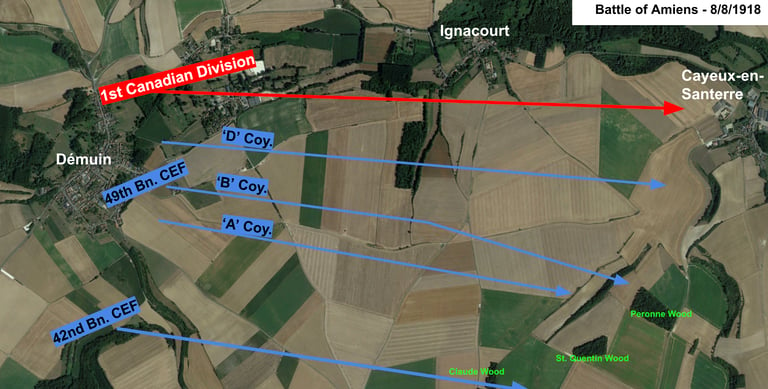

Advance & Victory
At the appointed hour, the whistles blew and the men advanced. Only scattered resistance was encountered. No trenches were found. Instead, the battle was fought over rolling fields and the mens training in open warfare had set in to great effect. The battalion advanced further that day than any other day in the three years before August 1918.
The German Line is Broken
On the morning of the 8th of August, shell fire ripped the silence away from the battlefield. All hell had broken loose on the German frontline and the massive allied offensive had begun. Canadian troops surged across the river Luce and captured the village of Démuin. Following behind was the 7th Brigade posed with continuing the advance Eastward.
The Battle of Parvillers
Following the victory at Amiens, British infantry replaced the Canadian formations and continued the assault Eastwards. Eventually they encountered heavy resistance near the destroyed village of Parvillers. There the old French and German trench lines from the 1916 Battle of the Somme still existed and were employed by the Germans in their defence. The British attack on Parvillers failed and the 7th Canadian Brigade were called forward to capture the village. The PPCLI and 49th Battalion (E.R.) are given the task.
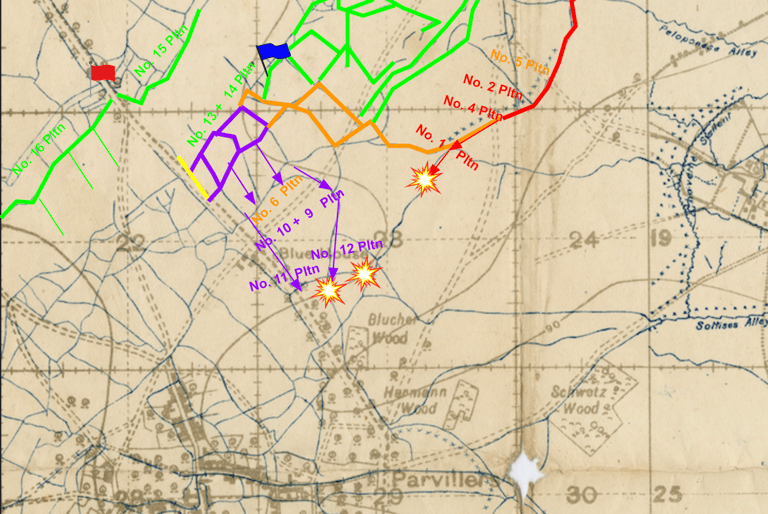

13th of August, 1918
An assault was made by "A" and "C" Company towards Blucher Wood. Heavy resistance was encountered by "C" Company advancing over the top and they soon continued the advance by bombing the German trenches with hand grenades. Each inch of ground had to be fought over. The same heavy bombing was encountered by "A" Company. Eventually both companies reached Blucher Wood and the position was eventually captured.
A First Hand Account: John Bartle Hayfield
"It is awful to see the men all torn to pieces by shell fire. Don’t know what minute you’ll get yours... (There was) considerable shelling last night. Dead Heinies everywhere + stink is fierce. People at home do not realise the real horrors of war. Sure breaks down a man alive."
14th of August, 1918
Following the success of the previous day and in cooperation with the PPCLI, "D" Company of the 49th Battalion (E.R.) attacked and captured Parvillers. They later withdrew from the position and eventually recaptured it. The battalion was relieved the following day.
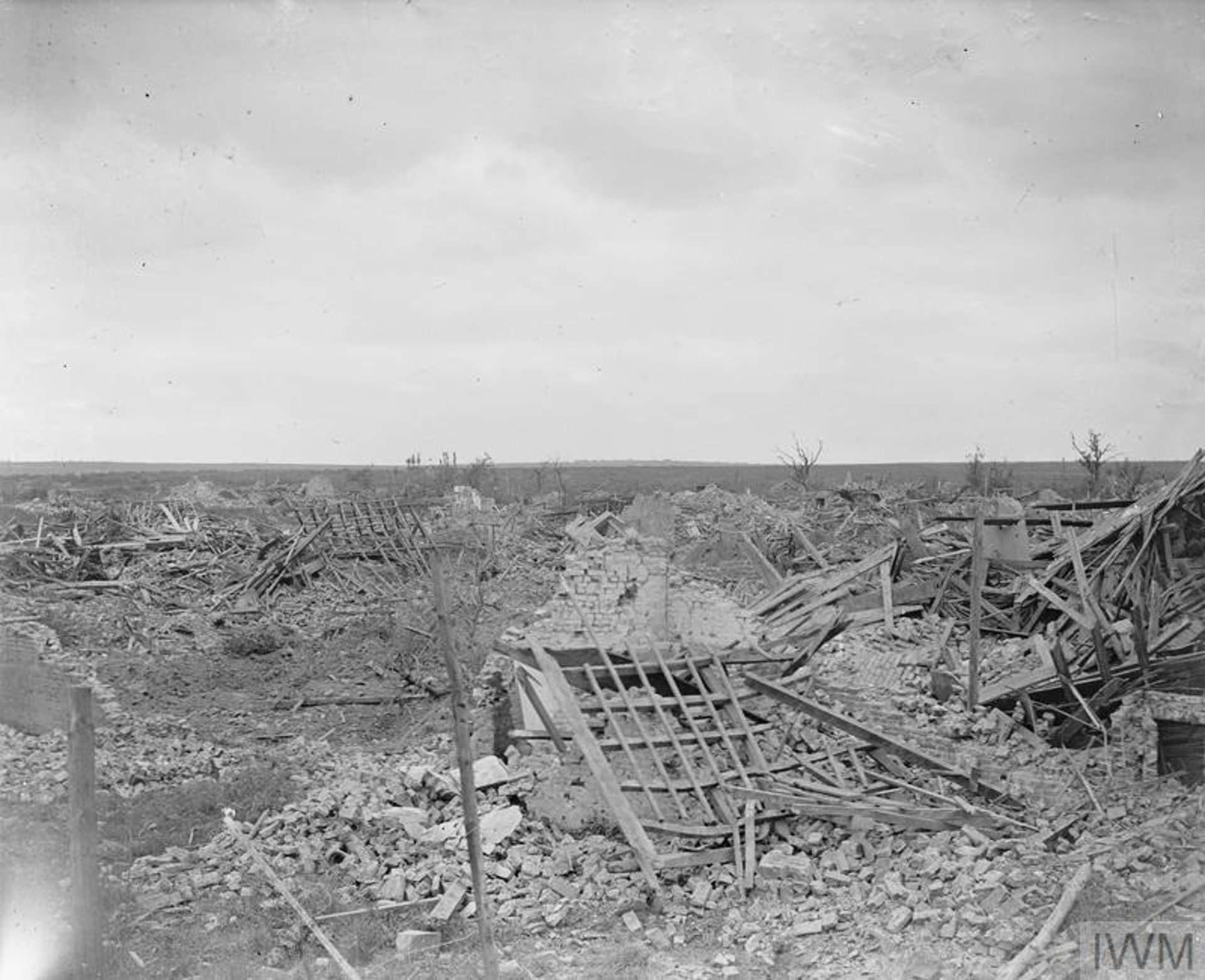
Battle of Arras 1918
August 26th - August 28th, 1918
The Battle of Arras
Since the start of the war, Arras had seen heavy and back and forth fighting. In August 1918, it would be the place for the next big Canadian advance. 40 Kilometres to the South-East of Arras lay the city of Cambrai; a major railway junction point. Cambrai's capture would be the key to majorly disrupting German supply lines and forcing a general breakthrough. Barring the way forward for the Canadians lay numerous German defensive lines and trench networks. Each would need to be captured.
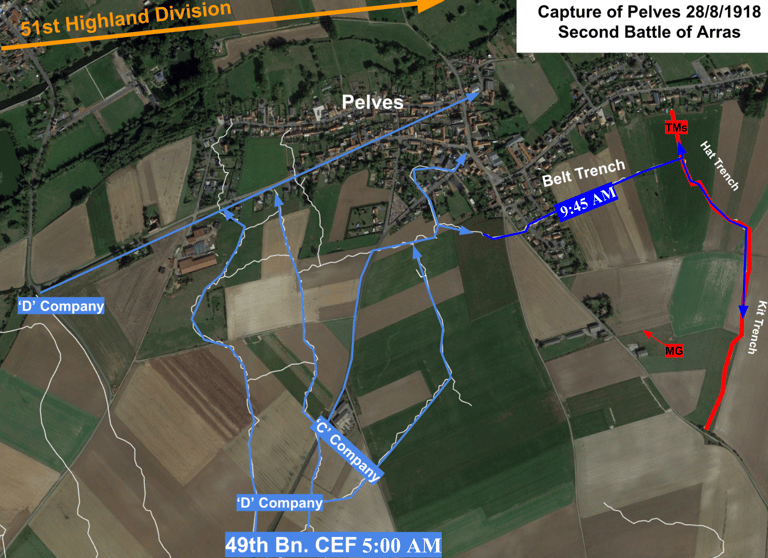

Objective; Pelves
On the 26th of August, the battle commenced and Canadian forces surged forward. The village of Monchy-le-Preux was captured and "B" Company, 49th Battalion (E.R.) was assigned to flank protection for the PPCLI now fighting East of the village. The battle stagnated but it was observed that the village of Pelves could possibly be captured.
On the morning of the 28th of August 1918, "C" and part of "D" Company's began their drive through the communication trenches finding little to no resistance. Upon reaching the main road, signal flares were lit and the rest of "D" Company advanced from a sunken road to the West of the village. The attack was a big success and the shattered village had been captured. Later heavy fighting took place to capture Kit and Hat Trench which was heavily held and defended. Ultimately, the trench was taken and Pelves was secured. During this time, "A" Company had been in positions further to the South and fended off a large German counter attack with effective machine gun fire. The 49th Battalion (E.R.) was relieved from the frontline that night.
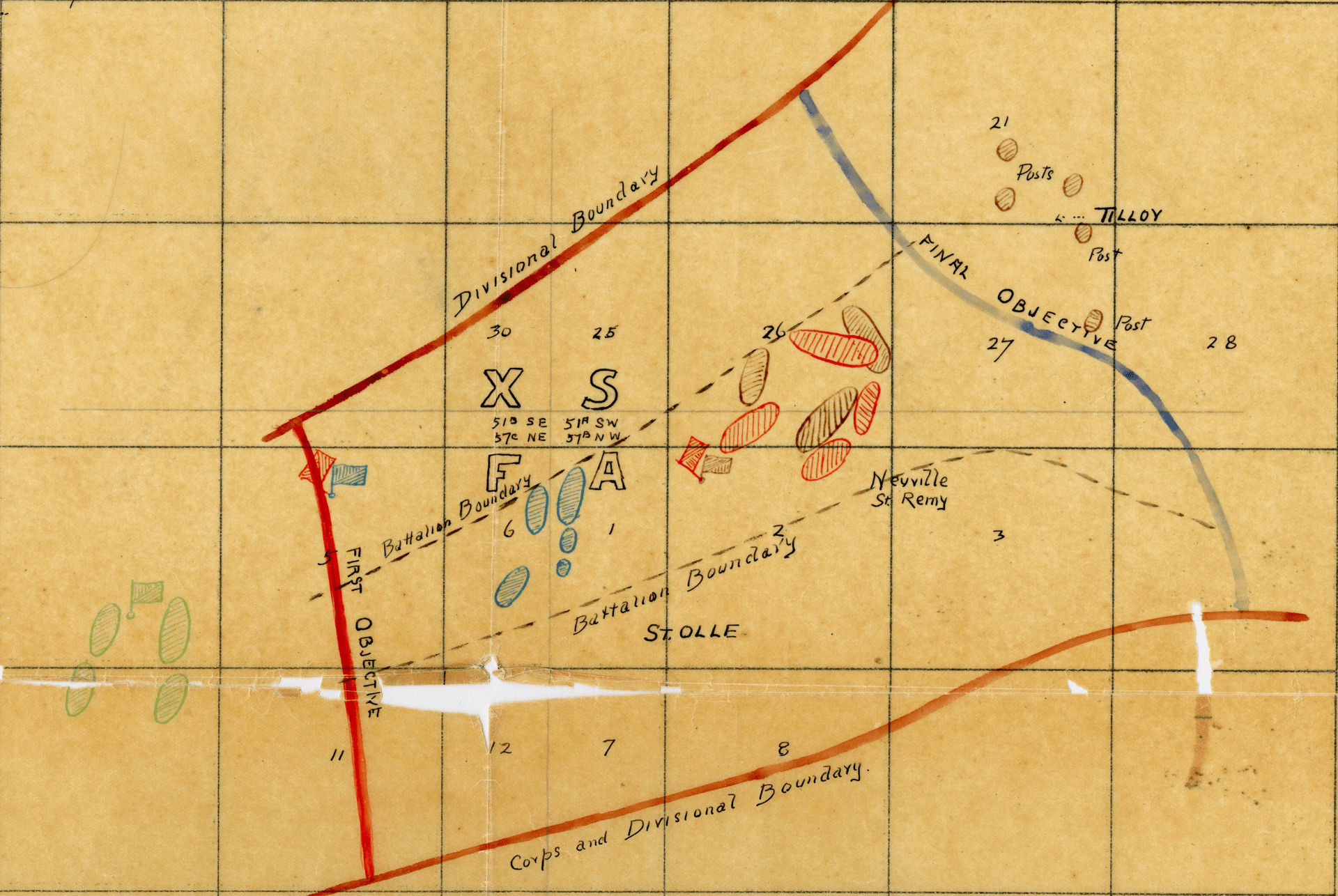
Cambrai 1918
September 28th - 30th, 1918
The Battle of Cambrai
By late September 1918, Cambrai was within reach of the Canadian Corps. Blocking them was a dry, but heavily defended, canal. On the 27th of September, the attack was commenced and a crossing was achieved. As the Canadians began flooding across, the call for the 49th Battalion (E.R.) eventually came. That night they began moving forward to the Marcoing Line of trenches, still being defended by the German forces.
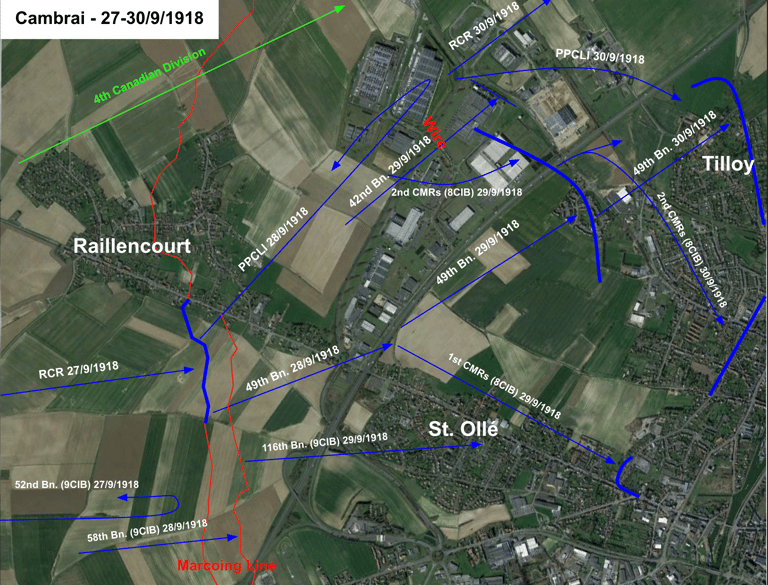

28th of September, 1918
With the first line of the Marcoing Line captured, it was left to the 49th Battalion (E.R.) with support of the PPCLI to capture the Marcoing Support Line. This they did and as they advanced past it, heavy machine gun fire from the church tower at St. Ollé pushed the 49th Battalion (E.R.) to a sunken road. There they received the orders for the major attack scheduled for tomorrow morning. They would be attacking Tilloy Hill.
29th of September, 1918
At 8:00 AM, the advance began. The barrage was largely ineffective and for the 1st Canadian Mounted Rifles attacking St Ollé, they initially withdrew after starting the attack. It would be a number of hours before the machine gun in the St. Ollé church tower would be silenced. It's fire would be deadly for the Fortyniners. As the 49th Battalion (E.R.) moved forward, they came under steady success until reaching the Cambrai-Douai road on the base of Tilloy Hill. There German machine gunners impeded the advance of the battalion. The attack was once more, held up.
30th of September, 1918
A renewed attempt would be made on the capture of Tilloy Hill, but not by the 49th Battalion (E.R.). From the North, the PPCLI pushed forward and fought to establish themselves on the heights of the hill whilst the 2nd Canadian Mounted Rifles would fight their way through the railway tracks on the Southern Flank. As both attacking formations were low on men, "C" Company was sent forward to aid in the capture of Tilloy Hill. Heavy fighting incurred as the men fought to establish and depend their posts in the face of numerous enemy counter attacks. Eventually the position was won and the relief arrived. The 49th Battalion (E.R.) had just fought their final battle of the Great War.
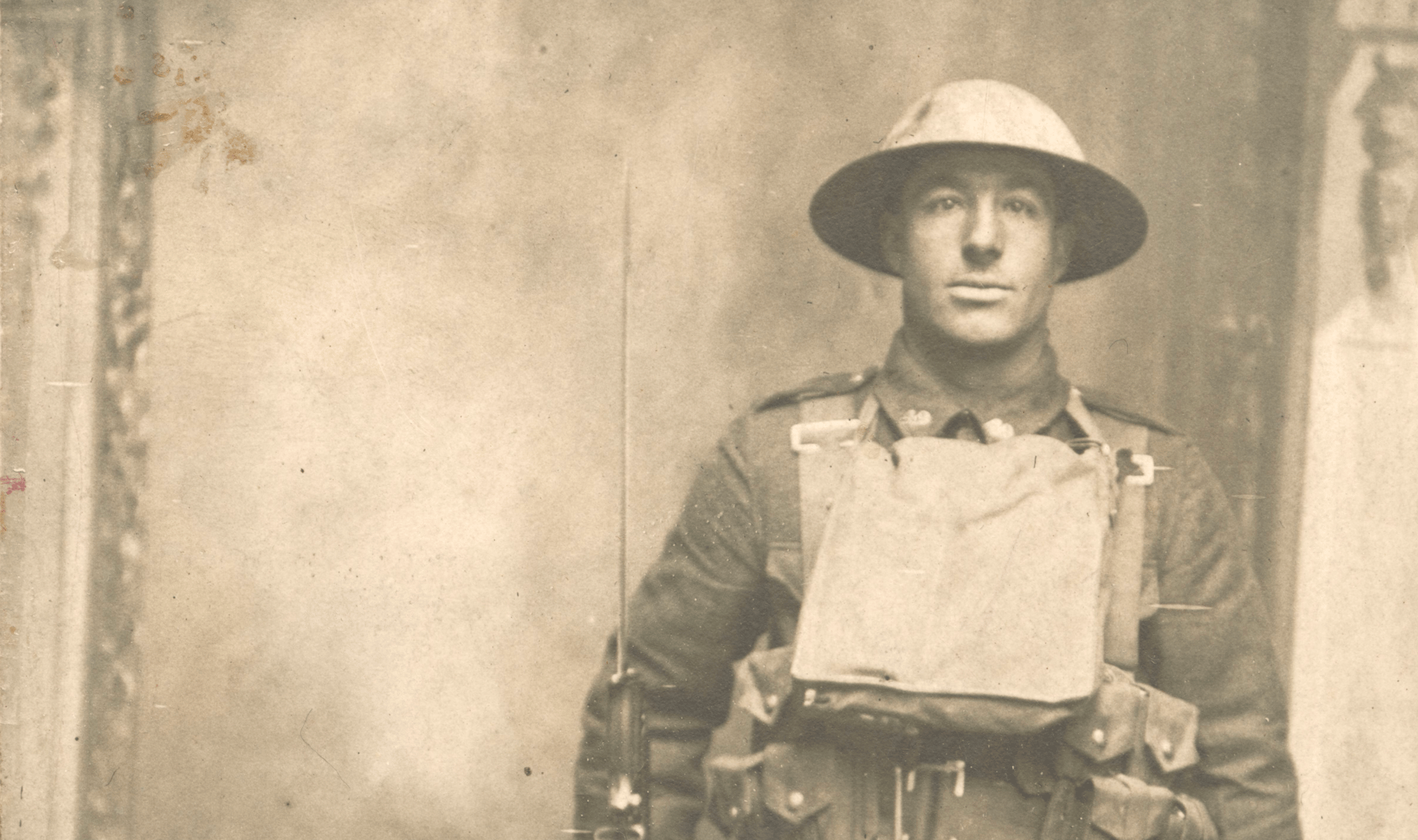
Coming soon!
The rest of the narrative to be told in the coming weeks
